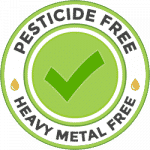Hemp, a member of the cannabis family, is a versatile plant with a rich history. Despite being associated with marijuana, hemp has less than 0.3% THC and cannot cause a ‘high’. This article delves into everything you need to know about this fascinating plant.
What is Hemp?
Hemp refers to the non-intoxicating varieties of the Cannabis sativa L. plant, known for its fibrous stalk, nutritious seeds, and cannabinoid-rich flowers. Key features of hemp include:
- Low THC content: Hemp must have 0.3% or less THC (the compound that causes the ‘high’ in marijuana) by dry weight.
- Versatility: Hemp can be used to produce a range of products, including textiles, food, paper, and biofuel.
- Environmental friendliness: Hemp can help improve soil health and is a renewable resource.
History of Hemp
Hemp has a long-standing history in human civilization:
- Ancient use: Archaeological evidence suggests that hemp was used as far back as the Neolithic Age.
- Industrial era: In the 18th and 19th centuries, hemp was widely used for ropes, sails, and clothing.
- Modern era: Today, hemp is being rediscovered for its versatility and environmental benefits.
Types of Hemp Plants
There are generally three types of hemp plants:
- Fiber Hemp: Grown for its fibrous stalk, mainly used in textiles and construction materials.
- Seed Hemp: Cultivated for its nutritious seeds, used in foods and cosmetics.
- CBD Hemp: Grown for its flowers, which are rich in CBD and other cannabinoids.
Uses of Hemp
Hemp can be used to produce a wide range of products:
- Textiles: Clothing, shoes, and accessories.
- Construction: Hempcrete, a sustainable building material.
- Food and Nutrition: Hemp seeds are rich in protein, fiber, and healthy fats.
- Cosmetics: Hemp seed oil is used in lotions, soaps, and hair products.
- Medicine: CBD oil, made from hemp flowers, is used for therapeutic purposes.
Conclusion
With a wealth of uses and significant environmental benefits, hemp is more than just a crop—it’s a solution to numerous ecological and health challenges. By deepening our understanding of hemp, we can fully harness its potential and contribute to a more sustainable and healthy future.
